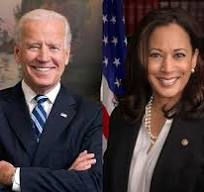Does Your Vote Count?
- Gwennie Mae

- Apr 11, 2020
- 3 min read
The other day, I was talking with a person about the Electoral College. I’m for eliminating it, and the other person is for keeping it. There are lots of pro and con articles about the Electoral College. One argument is that the Electoral College protects rural states from the dominance of larger states and cities. This belief is a myth where the big states, with more electors, dominate the Electoral College. Here’s why:
There are over 300 million people in the United States. There are 538 electors. A presidential candidate must receive 270 electoral votes to win the election. In recent history, the Electoral College overrode the popular vote (Gore vs. Bush, and Clinton vs. Trump).
Rural states such as Wyoming have a smaller number of electors. For example, Alaska and Wyoming each have three, Hawaii and Idaho each has four. New York and Florida, by contrast, have 29 electors each. It seems that the states with the lower electors already have less of a say in the election.
The big states don’t necessarily pick the president. A majority of the larger states are incredibly competitive in a presidential election. The two largest states, California and Texas, are Democratic and Republican, respectively. There are more Florida voters than New York.
The population of the 20 largest cities represents 11% of the United States population. That is 34.1 million people out of our current population of 323.1 million. The cities are too small to determine the Electoral College. Big cities and states won’t dominate presidential elections by popular vote if we eliminate the Electoral College.
The Gilder Lehrman Institute of American History found the following: “Finally, some opponents of the Electoral College point out . . . its failure to accurately reflect the national popular will in at least two respects. First, the distribution of Electoral votes in the College tends to over-represent people in rural States. This is because the number of Electors for each State is determined by the number of members it has in the House (which more or less reflects the State’s population size) plus the number of members it has in the Senate (which is always two regardless of the State’s population). The result is that in 1988, for example, the combined voting age population (3,119,000) of the seven least populous jurisdictions of Alaska, Delaware, the District of Columbia, North Dakota, South Dakota, Vermont, and Wyoming carried the same voting strength in the Electoral College (21 Electoral votes) as the 9,614,000 persons of voting age in the State of Florida. Each Floridian’s potential vote, then, carried about one third the weight of a potential vote in the other States listed.
Third-party candidates are also shut out from the Electoral College, thereby ensuring we remain a two-party country. Would Bernie Sanders, running as an Independent, win his race for president if we eliminate the Electoral College and let contenders win with the popular vote? Would we want Jill Stein, the 2016 Green Party candidate, as our POTUS? While I’m not saying that either would win the popular vote, eliminating the Electoral College would give them a chance to be counted.
Last, candidates don’t campaign in rural states. In 2016, neither Trump or Clinton visited Idaho, Wyoming, Hawaii, or Alaska. Both candidates visited Florida the most, with Clinton including Ohio and Pennsylvania.






Comments